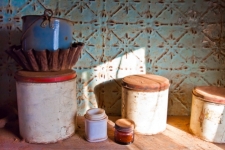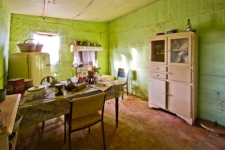A Brief History Of Gwalia Museum
Gwalia Museum started in 1972 as a historical gallery in the Sons of Gwalia Mine Office. It was started by an enthusiastic group of locals who were keen to preserve the history of the mine and the people of the area.
Tourist numbers started to increase in the 1980s and with gold booming again, Sons of Gwalia Ltd arrived to mine the area again. With their involvement and tourism and heritage funding, Gwalia embarked on another phase of its life. The headframe and winder were relocated to the Mine Precinct and several miner’s camps were relocated to the townsite to save them from being swallowed up by the open cut pit.
In 1995, with Leonora’s centenary celebrations approaching, the community pulled out all stops to breathe new life into Gwalia. Under the direction of an enthusiastic curator and the Leonora Tourist Committee, rights to restore the miners’ cottages and camps were auctioned off. The response was terrific with bids from $20 to $1,000. Over 100 people were involved, ranging in age from 8 to 72 years. The volunteers who bought the cottages were given guidelines for restoration. They were to use original materials and colour schemes. The Museum provided hessian and information sheets. Window frames, old newspapers and other collectibles were gathered with great energy and generosity. The volunteers found that each house had its own personality. Some were lived in until not so long ago. Most were left abandoned when the Sons of Gwalia Mine closed in 1963.
From 2001, a manager was appointed to oversee the work of the museum. The old Mine Manager’s House was converted to a bed and breakfast.
In 2010, the Shire of Leonora took over ownership and management of Gwalia Museum.


